Helsinki
Often considered to be Finland’s only metropolis, Helsinki is well-known for its innovative art, culture, love of everything sauna-related and – according to the World Happiness Report 2020 – being the happiest city in the world!
So the question is, why wouldn’t you want to travel here?
From a personal point-of-view I’ve always loved Scandinavian countries. The people are welcoming, the streets are extremely clean, the cities are surrounded by natural beauty and there is always lots to do.
Having been to the capitals of the other countries in the region (including Reykjavik in Iceland and Stockholm in Sweden), Helsinki was high on my to-do list and there were many factors that were drawing me in.
One aspect is the country’s rich history. Helsinki was founded by Swedish King Gustav I in 1550 as the town of Helsingfors. Gustav intended for the town to serve the purpose of consolidating trade in the southern part of Finland and providing a competitor to Revall; known today as the Estonian capital city, Tallinn.
Helsinki is also home to numerous Art Nouveau-influenced buildings belonging to the Kansallisromantiikka trend, designed in the early 20th century and strongly influenced by Kalevala, which was a common theme of the era.
Another draw, aside from their remarkable history and culture, is that Finland is also home to some of the most stunning natural landscapes and breath-taking vistas.
And that’s not to forget their love of all things sauna related!
So what should a first-time traveller to Helsinki know before setting off?
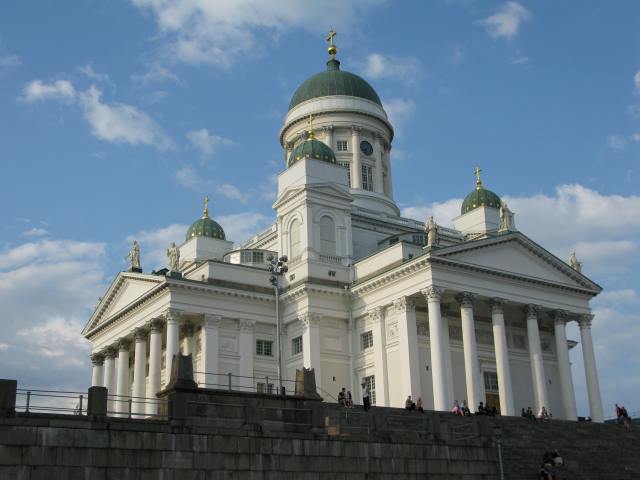
One of the first things to note is the weather in Finland.
Helsinki has a humid continental climate similar to that of Hokkaido or costal Nova Scotia. Owing to the influence of the Baltic Sea and North Atlantic Current, temperatures during the winter are higher than its northern location might suggest, with the average in January and February around −4 °C. Still not warm by any stretch!
Winters in Helsinki are notably warmer than in the north of Finland, and the snow season is much shorter in the capital, due to it being in extreme southern Finland.
The average maximum temperature from June to August is ranges from around 19°C to 22°C. During hot summer days, daily temperatures are a little cooler and night temperatures higher than further inland. For reference, the highest temperature ever recorded in the city was 33.2°C; but this was an extreme case so never expect this.
It’s worth remembering that the weather can still be changeable even in the summer months and there are still, on average, around 12 days of rain each July. Therefore, remember to pack some wet-weather clothing no matter what time of year you visit.
While I was there, it was mid-July so temperatures were warm. It was comfortable t-shirt and shorts weather for the most part, but there were a couple of downpours that meant umbrellas were called upon. It’s all part of the Helsinki experience.
The next thing to think about is the currency. Like a lot of mainland Europe – but less frequent in Scandinavia – the Euro is used in Finland. At the time of writing, £1 sterling would get you around €1.15.
Unlike Stockholm, which seemed to shun cash transactions, most places in Helsinki still accept hard currency. However, there is a general move towards cashless transactions. For example, cash sales on the Finnish public transport ended on Finnish trains in September 2019 and many other businesses around the city are moving to accept card-only transactions.
For the time-being, however, make sure you take a reasonable amount of cash with you (Finland is not a cheap country to visit) as well as a credit card to ensure all your needs are covered.
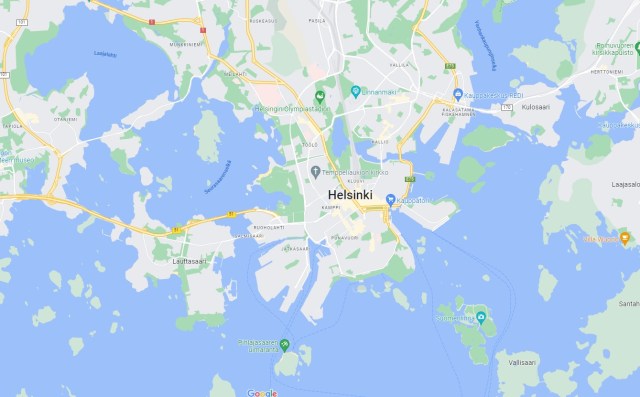
If you are travelling from England, then there is a two-hour time zone difference to take into consideration with Finland. This means you’ll lose two hours on your travel to the country but gain them back again when you return.
Another thing to consider is the power points in Finland to ensure your devices stay charged up.
For Finland there are two associated plug types, types C and F. Plug type C is the plug which has two round pins and type F is the plug which has two round pins with two earth clips on the side. Finland operates on a 230V supply voltage and 50Hz.
The local language also needs to be thought about. Surprisingly, there are two official languages of Finland; those being Finnish and Swedish – as well as a host of other smaller provisional languages that are spoken in some of the smaller regions of the country.
Fortunately, for a British person, English is widely spoken, written and understood in Helsinki – and indeed across much of Finland – meaning that interactions with local people remain easy.
However, as always, it’s useful to go armed with a few key words and phrases to help ease conversations along. Just knowing (in Finnish) the likes of hello (hei), goodbye (hyvästi) and thank you (kittos) can be a massive help.
Interestingly, there is no individual word for please in Finnish. Instead, The polite way to ask for things is – for example – “can I have some milk, thank you” or “could you pass the butter, thank you”.
Also, it’s worth remembering that despite being referred to by some variation of ‘Finland’ since the medieval times, the Finns continue (as they have for centuries), to refer to their country, and themselves, as ‘Suomi’. Don’t therefore be confused if you see or hear this word in relation to either.
As ever, ensure you do your own research on the city and the country before you go as this will help you plan your activities while you’re there and ensure you get the best Helsinki experience for you available.
Getting there
Flying to Helsinki is by far the easiest and quickest method to get to Finland.
There are of course other methods of travel available. Some may prefer to visit as part of a cruise – with many stopping in the region as part of trips around the Baltics. This really didn’t appeal to me, however, as it would limit my time and exposure to everything that Helsinki, and its people, had to offer.
That meant that the only choice that was left to make was to decide which airline to fly the three-hour flight from London with.
There are a few of options for direct flights from London. The first is with Finnair – the flag-carrier and largest airline from Finland – which travels from London Heathrow, the second is with Norwegian Air Shuttle who fly from London Gatwick and the third is with Ryanair who fly from London Stansted. On this occasion, I went with the latter option.
At the time of writing, flights in July – the time of year I travelled to Helsinki – from London Stanstead were costing around £185 for a return trip. This is, of course, without any extras that Ryanair throws in for extra money including extra luggage and seat selection.
Once you’ve landed you’ll find yourself at Helsinki Airport which is the main international airport for the city. The airport is located in the neighbouring city of Vantaa, which is around 10.5 miles (17km) north of Helsinki’s city centre.
Opened in 1952 for that year’s Summer Olympics, over 20 million passengers annually fly in and out of its two terminals (although this has reduced in recent years due to Covid-19 restrictions).
The airport is modern and spacious and has easy access to numerous routes to the city when you’ve finished at the airport.
The airport is located in the immediate vicinity of Ring III and Finnish national road 45 if you want to travel by hire car or taxi. Additionally, there is a railway line that runs beneath the airport in a tunnel that is connected to the Helsinki commuter rail.
Where to stay
If you’ve read any of my other blogs on World-Complete (hopefully you have) you’ll know that I usually stay in an AirBnB. While Helsinki has many of these on offer that should cover a variety of budgets, this time I opted to stay in a hotel near the city centre
For this I selected the stylish Scandic Paasi.
This classily decorated hotel has excellent service, while also boasting a casual atmosphere. Located in a small courtyard in the peaceful Siltasaari district of Hakaniemi, there are numerous places to catch public transport nearby or walk to the city centre, making it easy to explore the nation’s capital.
The hotel’s interior was inspired by the different styles of the buildings and the 19th-century circus in the area. The rooms and the lobby are decorated in a playful and unique way that blends the history of the hotel with the present-day.
Scandic Paasi has a selection of ultra-modern rooms to choose from and they sort them by a selection of themes. Some of their rooms are decorated in the “conscious theme”, other rooms decorated with punchbags in the “leisure theme” (this was the option I got) and some rooms are decorated in the “spectacular theme” in the style of the colourful circus history of the area. If you are travelling on a bigger budget there are also a few rooms that sport a private balcony and even some with a private sauna. This option, however, was a bit more than I was willing to part with for a short city-break.
It’s worth noting that this is not a cheap, budget hotel. To give you an idea of prices, a standard room (that comes in either the conscious theme or leisure theme styles) costs around €126 per-night (around £110) in July, while a superior room (boasting the spectacular theme) will cost slight more at €146 per-night (around £127). However, for that money, you are buying a comfortable, welcoming room, breakfast in the morning in the hotel restaurant along with easy access to the city and its amenities.
A neat little quirk of this hotel that I discovered was that they have a couple of bikes available that guests could ask to borrow – free-of-charge – and explore the city on. These bikes were well-worn and, in some instances, needing a touch of love and repair, but it was a nice option to have; and one I took up on at least one occasion. Cycling is a great way to see the city (a bit more on that later on) and also an environmentally conscious method. It was a great addition to this hotel’s offerings for its guests.
Having settled into my room – complete with aforementioned punchbag – I unpacked my clothes and made myself comfortable before heading out to explore Helsinki properly for the first time.
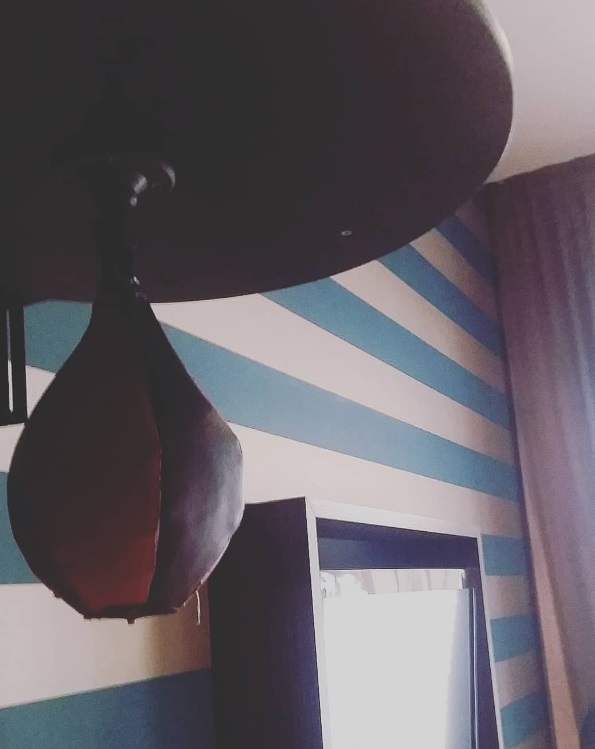
Getting around
There are a few ways to travel in Helsinki with walking still being my preferred method.
However, you can hire cars from the airport – and from locations around Helsinki – but unless you’re planning on going elsewhere in Finland, this is an expense you can probably do without.
Starting from the beginning though, I needed to get from the airport to the city centre once my plane had landed. While there are road routes that you can take – including getting in a taxi – this is an unnecessary expense.
The mode of transport I opted for was to board the efficient railway service from the airport.
The Ring Rail Line is a railway route is in the area of the city known as Vantaa. I found my way down to the railway from the airport so I could get to the city centre quickly and inexpensively.
For just €4.60 (about £4) for a one-way ticket, I was able to board the train at the airport station and within 30 minutes I was in the city centre. Perfect.
Purchasing a ticket is easy and should be done before you enter the train from the machines in the station (paying by either cash or card).
The station at the airport is underground yet large and airy. Trains to the city centre arrive – on average – every 10 minutes so even if you miss one, another is nearby.
Onboard, the train is comfortable and usually very clean. There will be plenty of room (unless the train is extremely busy) to sit and store your luggage so it’s a good opportunity to relax for 30 minutes and enjoy your first sights of Finland from the trains windows after you leave the station.

While walking is easy to do around Helsinki, I found one of the best ways to get around quickly – and in a fun way – is to use the many bikes that are readily available around the city for short-term hire.
As I previously mentioned, the hotel I stayed in did have a couple of older bikes to use, but they were slightly tired and in need of some love. The chain kept coming off one and the seat wasn’t well fixed on another. It’s why I decided to spend a little bit of money and sign-up to use the Helsinki City Bikes.
These bright yellow bikes sit in docking stations scattered around the city. In total, there are nearly 4,600 bikes and 460 stations in Helsinki and the nearby Espoo regions.
You register online with and chose one of the three options; a one-day pass for €5 (around £4.30), the week pass for €10 (around £8.60) or the season pass for €35 (around £30.20).
As I was there for three days, I selected the week pass for €10 which gave me an unlimited number of bike hires for the week with each ride lasting up to 30-minutes.
Getting going is easy. You simply go to a bike station (you can see the locations of bike stations and available bikes on the journey planner), then unlock a bike by entering your cyclist ID and PIN code on the device in the middle of the handlebar, adjust your seat and peddle away.
The trick to remember is that each ride is 30 minutes for the money you’ve paid. If you go longer than 30 minutes before docking the bike in a station, then you will be subject to additional charges at a rate of €1 (around £0.85) for each additional 30 minutes. If you don’t mind these extra charges, then you may mind the delay charge of €80 (around £69) which kicks in if you don’t return the bike to a docking station within five hours!
There is a simple way around this though. Every 25 minutes I went to the nearest docking station (there really are loads all over Helsinki) and quickly docked the bike. I then immediately took the same bike out again by entering my details in the same way I did the first time. This restarted the 30 minutes.
The system is a great and mimics similar ones elsewhere around the world. The bikes were generally in good working order and easy to ride. A lot of central Helsinki was quite flat so cycling was very simple.
The Finnish authorities have also put a lot of work into the cycling infrastructure and there are ample cycle paths around the city that are spacious and car free – making it a safe and fun way to see the city.

Top sites
Helsinki is a beautiful and modern city with loads to see and do. As I was only in the city for three days I wanted to ensure I saw some of its key features.
But as well as the built-up city centre, it was important for me to not only see the culture and the history that Helsinki has in abundance but also to see some of the countries beautiful natural surroundings as well as taking the time for some fun and games.
My first stop – and one of the city’s focal points – was the Helsinki Cathedral (Helsingin tuomiokirkko).
Located above the spacious Senate Square in the Kruununhaka neighbourhood, the cathedral is a distinctive landmark in the Helsinki cityscape, with its tall, green dome surrounded by four smaller domes. The building is in the neoclassical style.
Aside from acting as a superb meeting point for local people – and being within a minute’s walk from the popular water-front market square (a must-visit where you can sample some of the wonderful local food on offer) – it’s a shining example of the classical architecture present in the city.
The church was originally completed in 1852 as a tribute to the Grand Duke of Finland, Tsar Nicholas I of Russia and is also known as St Nicholas’s Church.
Although still in use for services and other special events, the cathedral is one of Helsinki’s most popular tourist attractions and regularly welcomes around half a million visitors through its doors.
The cathedral is free to enter and, once inside, showcases its beautifully curved walls and simple design; creating an airy, spacious and tranquil room for worship-goers to use. It won’t take too long to explore the cathedral inside so a quick look around shouldn’t take longer than 15 minutes.
Outside, the cathedral sits atop a series of stairs on several of its sides. These stairs not only give you a good view over the surrounding square, but also act as a good place to grab a pew (or a stair) and plan out your next activity.
Sitting here and enjoying the Helsinki sun was a fond memory of mine from this trip.



As I have mentioned in previous blogs, one of the best ways I’ve found to explore a new city is to join up with a free walking tour.
Most cities have them, and Helsinki has a few to choose from but on this trip I chose to go with Green Cap Tours.
Meeting at Senate Square – at the base of main staircase to the cathedral – the tour groups can vary in size from just a few to many people.
The tour is easy to spot. Just look for – as the name would suggest – the friendly and helpful guides wearing the green caps!
The Helsinki Free Walking Tour is designed to give the feel of the city with stories of the history and everyday life of the locals.
Since 2015, Green Cap Tours have been taking visitors on this free walking tour, that they constantly develop the content for, to provide a useful yet entertaining package. Despite being the happiest country of the world, Finland – and indeed Helsinki – has had its fair share of controversies for visitors to indulge their imaginations in.
Joining the two-hour tour, you will get familiar with some of the curiosities of Helsinki and its local living habits.
The tour will take you past a number of the city’s key sites including the University of Helsinki, Presidential Palace, Uspenski Orthodox Cathedral and the Sauna Centre.
The tour will conclude near where it started and – as is the case with all these tours – you pay as much as you feel it was worth. To give you an idea, most people, in my experience, give between €5 (around £4.40) and €10 (around £8.70) per person.
The tour is a really great way to get your bearings in the city in a whistle-stop manner.
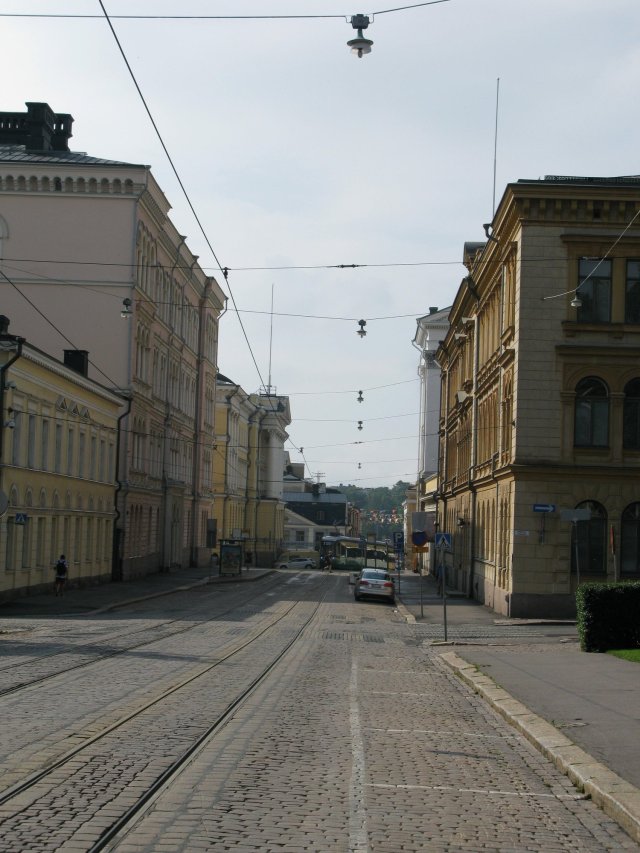
No trip to Helsinki would be complete without a trip to at least one of its famous saunas.
It is estimated that there are three million saunas in Finland, serving its population of 5.5 million people, so it is easy to can see just how important sauna-culture is for the Finnish people.
As you’d therefore expect, there is an array of public saunas all over Helsinki, that cater to varying tastes. Whether you are looking for a marine spa and an oasis of urban culture right at the heart of the city, or a sauna in a modern neighbourhood that serves as a combination of a relaxing sauna and a restaurant, you’re sure to find it all.
There was one particular sauna that caught my attention and I’d urge visitors to give it a try.
The Sauna Löyly Helsinki is a public sauna and restaurant complex in Hernesaari district on the southern tip of Helsinki. The complex includes a traditional Finnish smoke sauna and two other wood-heated saunas, a year-round terrace and a restaurant.
The saunas offer direct access to the outdoor seating area and the sea, where it is possible to enjoy a refreshing swim, all year round. There are separate changing rooms and shower facilities for men and women but as the saunas and other public areas are mixed, it means that customers are respectfully asked to wear swimming costumes at all times (not the case in all saunas it’s worth noting).
The restaurant, favouring ecological and locally produced ingredients, offers lunch, dinner and brunch on Saturdays while also serving an array of splendid drinks to enjoy while sat on the roof terrace.
A two-hour booking for the sauna costs €21 (£18.30) per person, and includes a towel, seat cover, soap and shampoo. If you suddenly discover you’ve forgotten your swimwear then fear not, as you can rent this here for just €6 (around £5.25) for the two-hour session.
The sauna usually opens between 1pm and 2pm (although on Saturday it opens at 9am) and stays open to between 9pm and 11pm (depending on what day of the week it is).
Approaching the sauna I was impressed by the elegance of its stylish wooden structure.
Its sharp, pyramid-style points jut out from all angles while a neat staircase welcomes guests to its roof terrace seating.
Overlooking the Gulf of Finland, Sauna Löyly is an extremely modern-looking structure in an otherwise practical, somewhat industrial, street-setting.
Make sure you sample both types of sauna during a visit. Both the smoke sauna and the wood-fired sauna can seat around 20 bathers at any one time, so there is usually plenty of space to get a seat for a session.
After a good steam, the best way to cool off is to step outside and take a jump into the calm waters of the sea. I won’t lie, jumping in is a shock to the system so prepare for it to feel pretty chilly (and colder still if the weather is bad) but, be brave and take the step, as afterwards your body will feel revitalised.
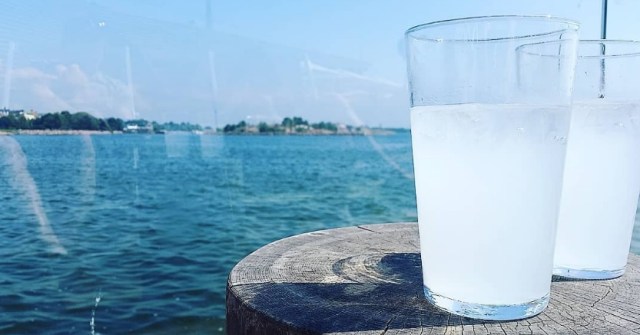
The archipelago of Helsinki consists of around 330 islands, providing a great gateway to lush green forests, sandy beaches and coastal nature that could fool you into believing you’ve travelled further afield. But unlike the outer archipelago, the Helsinki islands mix all the best amenities of a city – cafes, bars, restaurants – with the feeling of being in the archipelago.
One set of islands that cannot be missed is that of Suomenlinna.
Suomenlinna spans eight islands of which six have been fortified. It sits around 4km southeast of the Helsinki city centre and is popular with tourists and locals who enjoy it as a picturesque picnic site.
There is a great deal of history to this beautiful district.
The initial fortress is of Swedish design who started building it in the mid-1700s. There were two main aspects to Ehrensvärd’s design for Sveaborg (the original name for Suomenlinna): a series of independent fortifications across several linked islands and, at the very heart of the complex, a naval dockyard.
In addition to the island fortress itself, sea-facing fortifications on the mainland would ensure that an enemy could not acquire a beach-head from which to stage attacks on the sea fort. The plan was also to stock munitions for the whole Finnish contingent of the Swedish Army and Royal Swedish Navy there.
The fortress would be surrendered to the Russians in the 1800s and would remain that way for over a hundred years until May 1918, when it was given the name Suomenlinna (‘Castle of Finland’) to reflect Finland’s independence and was annexed to the state of Finland. Soon, the fortress housed various Defence Forces units and Suomenlinna became a Finnish garrison.
Moving forward to the present day, the fortress became a UNESCO World Heritage Site in 1991 and is home to around 900 permanent inhabitants with around 350 people working there all year-round.
Interestingly, there is also a working minimum-security penal labour colony on Suomenlinna. Inmates of this colony work on the maintenance and reconstruction of the fortifications.
It makes it a place that naturally attracts visitors. As a traveller, you can visit Suomenlinna by ferry (taking you to and from the Kauppatori ferry terminal on the Helsinki mainland) all year.
The trip to Suomenlinna takes 15–20 minutes and offers magnificent views of Helsinki and the surroundings from the sea. During the chilly winter months, the trip through the ice-covered waters is a unique experience.
The ferry ticket is covered by an HSL ticket as the ferry is part of Helsinki public transport. If you have a valid HSL ticket (AB, ABC or ABCD) you can use it to board the ferry. Suomenlinna is in the HSL ticket zone A.
At the time of writing a single HSL ticket – that is valid for 80–110 minutes – for zones AB costs €2.80 (around £2.50).
The good thing is that there is no entrance fee to the fortress. Visitors only have to pay for the crossing to Suomenlinna and back. It’s worth noting that the ferry ticket does not include entrance to the six museums on the island, however, and each museum has its own separate entrance charge. It’s a case of exploring the museums that are of interest to you.
Suomenlinna Museum, showcasing the history, the restoration and the present of the fortress as well as Military Museum’s Manege, is open throughout the year, whereas Ehrensvärd Museum, the submarine Vesikko, Toy Museum and Customs Museum are open only during the summer season.
Once I arrived at the fortress, I walked up the short path up to the main visitors centre.
There are a couple of options open to ways of exploring the islands. The first is to join up with a paid-for guided tour – which starts at the Suomenlinna Museum – and the second (which was the way I did it) is to walk around the islands yourself.
There are plenty of places to grab some food and drink on the islands. The many eateries of Suomenlinna range from cafés and lunch restaurants to fine dining. All of the cafés and restaurants serve during the summer season and many of them also serve visitors during the winter season.
As a minimum, you’d want to spend around two to three hours exploring the islands, but I’d urge you to stay longer and really see it all. To do it properly, give yourself at least half a day to walk the many walks and see all the fabulous views and sights that this charming network of islands has to offer.



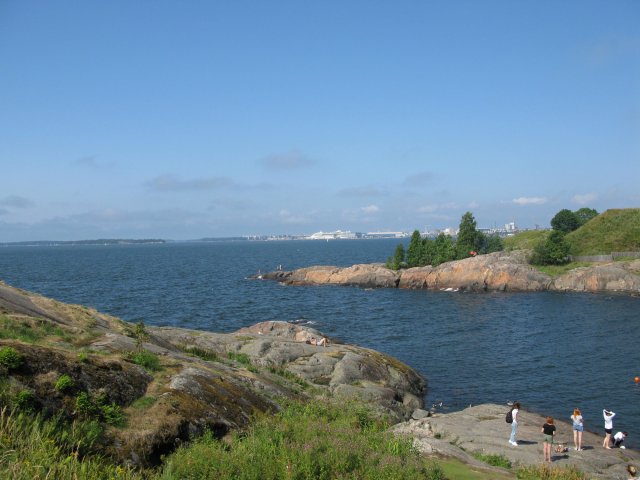
Back on the mainland, and I was looking for some light-hearted entertainment for an evening. So what better place to get this than at Linnanmäki theme park.
Opened in May 1950, Linnanmäki is owned by the non-profit Children’s Day Foundation which operates the park in order to raise funds for Finnish child welfare work – which makes a visit even more appealing. What’s more, it is the oldest and one of the most popular amusement park in the whole of Finland.
The park is open from spring to autumn and is visited by over a million guests annually.
Linnanmäki currently has 43 rides, along with many other non-ride based attractions. The most notable ride in the park is Vuoristorata; a wooden roller coaster, opened in 1951. It is the most recognisable symbol of the park and was one of the first permanent rides to be built here.
Technically the oldest ride at Linnanmäki is Karuselli (a carousel), which was built in Germany in 1896 and has been at Linnanmäki since 1954.
Linnanmäki has eight roller coasters. Other major rides include three tower rides, a ferris wheel, a river rapids ride and spinning rides. The park also has a selection of family and kiddie rides.
The good news is that admission to the park is totally free.
But that means that most of the rides can only be ridden with the possession of a ride ticket, or the more popular wristband, which allows the wearer unlimited access to all of the park’s rides for the entire day.
Currently a day-pass wristband can be purchased for €45 (about £40) per person. There is also a separate option of the evening wristband – which costs €35 (about £30.50) – and covers entrance to the rides for the final three hours of the park’s opening. Tickets can be purchased online, in advance, or on the gate.
The latter option is what I went for as I was only free in the evening having spent the daytime exploring Helsinki, and the three hours I spent in the park gave me plenty of time to try out all the rides I wanted to get on.
As a form of escapism, Linnanmäki is a wonderful place to spend time in Helsinki. It allows the inner-child within to come to the fore and shriek with excitement as you are hurled from side-to-side and upside down.
I can safely say, spending time at Linnanmäki remains one of my fondest memories from my time in Helsinki.



It would be criminal to come to Helsinki and not get out into the natural world. A great way to see some of the beautiful scenery in the surrounding area is to venture a little outside of the city centre and hire a kayak with Natura Viva.
Located at the Vuosaari Paddling Centre – and open at various times between the months of May and September – the centre gives a variety of hire options for those who want to venture out onto the water.
The easiest way to get here is to get on the Metro at Rautatientori in the city centre and take it for around 24 minutes east on the M1 line to Rastila. From there take the short 1km walk south to the water’s edge. The whole journey should take between 45 minutes to an hour.
For those that don’t want to walk from Rastila there is a bus (line 560 that runs every 10 minutes from the station) that can take you to within 400m of the paddle centre by dropping you off at Harbonkatu bus stop.
Once at the centre (which is pretty well hidden down some residential streets), you can book yourself onto a guided kayak or paddle board tour, but I wanted to go out on the water by myself and explore at my own pace. Fortunately, this option is available and you can hire kayak equipment for a minimum of two hours.
As kayaking is their speciality, they have a large fleet of kayaks, ranging from beginners’ models to more advanced models and to double kayaks.
Prices range from €32 (about £28) for a basic model to €49 (about £42.75) for a twin model for a two-hour trip. It’s advisable to book in advance online to avoid turning up and there not being any kayaks you want available. I chose the basic option and ventured out onto the water.
As soon as you depart, the beautiful surroundings make for an extremely peaceful experience. The openness of the water is in stark contrast to the busy city streets and the area is extremely quiet and serene.
At a comfortable pace, for a two-hour hire – you can make a loop of one of the islands (called Onkiluoto) and back to the hire centre.
The trip was enjoyable if a bit tiring. As a means of revitalising myself – and after taking my kayak back on land again – I made sure to stop at the centre’s coffee shop for a hot drink and quick snack before making the journey back to the city centre.
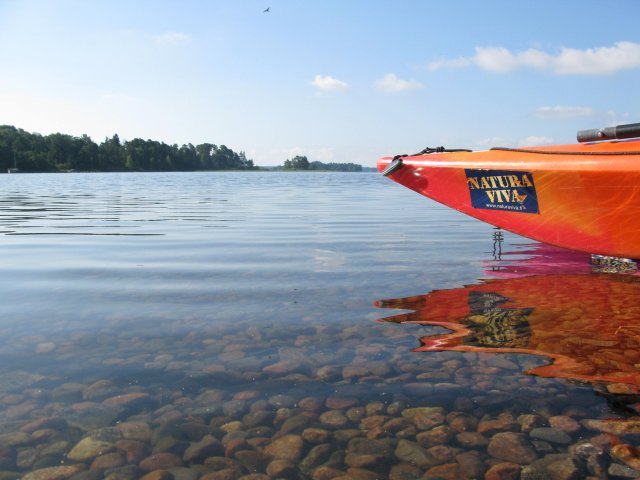


Where to avoid
There is not much to avoid in this beautiful city which prides itself on being one of the safest for visitors of all nationalities, genders and sexual orientations to come and enjoy.
One monument that could be skipped, perhaps, is the popular Havis Amanda fountain.
For me, this fountain only deserves a passing glance, at best, rather than going to hunt it out. However, you are likely to walk past it numerous times as it is centrally located in the Kruununhaka region – near the city centre.
The design was modelled in Paris in 1906, and erected at its present location at the Market Square in 1908.
Cast in bronze, it rests on a fountain made of granite. The sculpture is of a mermaid standing on seaweed as she rises from the depths, with four fish spouting water at her feet, surrounded by four sea lions.
Created by the renowned sculptor Ville Vallgren, he simply called the work Merenneito – which in English it translates as The Mermaid. However, it quickly started to get additional nicknames. The Finland-Swedish newspapers dubbed it Havis Amanda which is now the common name used in brochures and travel guides.
While it’s visually impressive, missing seeing it won’t lessen your Helsinki experience.

Great places to eat
Before getting on to my restaurant suggestion for Helsinki, one food that is hard to get away from in the city is liquorice. The Finns seem to love it!
If you ask a Finn why they love it so much, they will probably say they like the taste and that they have been eating it since childhood. It is simply a food that is common and unique to Finland, like red bean paste is in Japan or saltwater taffy is in the USA.
Personally, I can’t stand the taste of the stuff, but even I tried a little piece while I was in the city. It didn’t change my mind on it and was soon discarded in a nearby bin! Don’t let that put you off trying some though if you’re in Helsinki!
To get that awful flavour out of my mouth, a really good place to get some fresh street-food was to head to the market square by the water-front. Here there are a number of stalls offering different local food which includes a lot of seafood.
I stopped by one stall and got a small container full of freshly-cooked whitebait which was a delicious little snack to enjoy by the water.
Now, I often try and find one extremely nice restaurant to eat at while I’m away and for this trip that was the delightful Restaurant Ask.
Located on a street called Vironkatu, this restaurant was highly recommended by the Michelin guide (holding one star if I remember correctly) and it’s simple exterior hides a showcase of treats.
The menu is small and straightforward and I selected the taster-menu that was on offer. Across numerous courses I was tantalised by some exquisite flavours and beautifully-presented offerings.
While each course was small it proved to be filling over the duration of the meal and when it was time to leave, I didn’t feel like I had been short changed.
It’s worth noting that this isn’t a inexpensive option. Helsinki – as mentioned – isn’t cheap but this is an extra cost that some may not wish to stretch to.
To give you an idea, the long menu cost me (at the time) €89 (around £77) per person which is without wine or other drinks. In total, you’ll need to set aside between €200 (around £172) and €300 (around £258) for the meal.
Finishing off my last course here on my final night in Helsinki was a special treat though and something I look back on with great affection from my time in the Finnish capital.


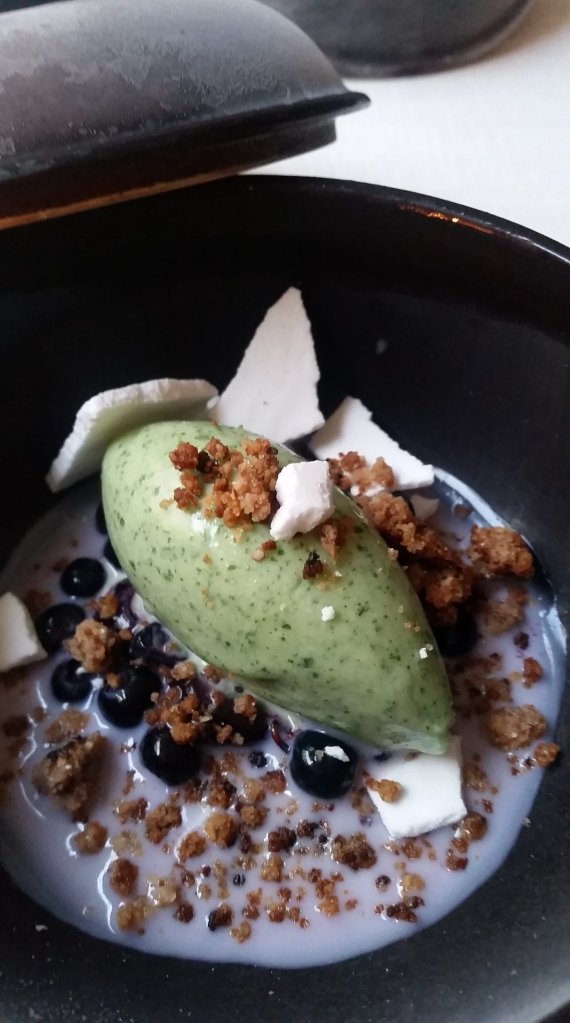
Useful links
Helsinki Cathedral (Helsingin tuomiokirkko)
Remember you can follow World Complete on Twitter, Instagram, Pintrest, Tumblr and Facebook send your comments and pictures from your travels using #WorldComplete and #Travel.


Thanks for this… I have a friend who lives in Finland and I’m hoping to visit next year 🙂
LikeLiked by 1 person
You’re very welcome. Hope you found the blog useful. Enjoy your trip to Finland when you do it and thanks for stopping by. 🥰
LikeLike
Hi
Thank you for the great words about our Restaurant. For your information restaurant Ask is temporary closed for relocation to new location. Will reopen as soon as we find the right place.
Until then you can enjoy our food and wine at our new restaurant Sekel Bar & Restaurant http://www.Sekel.fi
Best regards
Filip Langhoff
LikeLiked by 1 person
Ah good to know and thank you for stopping by to read my blog.
If I’m back in Helsinki I will be sure to look for your new location as well as restaurant Sekel Bar & restaurant.
All the best
LikeLike
This was jam packed with some really fascinating and useful facts about Finland and it’s southern capital. I’ve always wanted to visit and this has secured that desire in me even more now!
LikeLiked by 1 person
Thank you for your kind comments. Glad you enjoyed it.
LikeLike
I need to go to Finland, having been to Norway, Sweden and Denmark. The walking tours sound ideal.
LikeLiked by 1 person
It really is good. Great way to find your feet in the city. Hope my blog has proven helpful to you and thanks for stopping by 🙂
LikeLiked by 1 person
Amazing post. I’ve always wanted to go to Helsinki – I didn’t realise it was the happiest city though. That’s another reason to want to go for sure. The summer weather sounds perfect as well.
LikeLiked by 1 person
Thanks so much. Really glad you enjoyed the post. And yes, make sure you find a way / excuse to get yourself to Helsinki. Such a great city to explore. Happy travelling 🙂
LikeLike